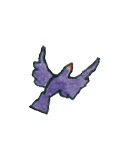The Kvetch Who Stole Hanukkah














We celebrate HANUKKAH, or The Festival of Lights, to commemorate the miracle that occurred when the Maccabees defeated the Syrian army and took back their Temple! The army, led by King Antiochus, destroyed the Temple and its holy altar, replaced it with many false idols and stole the golden menorah.
The Maccabees, led by Judah Maccabee, fought the Syrians with all of their might, and won!! They rebuilt the holy altar, removing all of the idols placed there by the Syrians, and constructed a menorah out of a different metal. In order for the Temple to be rededicated, the lights in the menorah had to last eight days. There was only enough oil for one night, and that is when “a great miracle happened there.” The candles on the Menorah miraculously burned for eight days, and the Temple was once again made holy!!

A Hanukkah menorah is a candelabra with eight candles, each representing one of the days of Hanukkah, and one extra candle called the shammash (or servant candle) with which the other candles are lighted.
A dreidel is a four sided spinning top. Most of us are familiar with the “dreidel game” in which we spin the dreidel and depending upon where it falls, we either win something, or not. The letters on the dreidel: nun, gimmel, hay and shin are an acronym for the Hebrew words meaning “a great miracle happened there.”
What is lesser known is the fact over 2000 years ago, it was children playing with spinning objects that actually tricked the Syrian armies. Antiochus declared that no Jew shall study or learn, but the Jewish people continued to do so, at great risk. Whenever they heard the Syrian armies coming their way, the children ran out of their dwellings and sat around playing with spinning objects. In doing so, they tricked the Syrians into believing that there was no learning going on!! But there was ALWAYS learning going on and the children’s trick worked!!!


We fry latkes (potato pancakes) in oil, symbolizing the oil that burned for eight days, rather than one. The story of “why potato latkes” is an interesting one and brings us to Yehudith, (Judith) one the heroines of the Jewish people. Originally, latkes were “fried cheese” pancakes, and only became “potato” pancakes after Jews came to Europe. It seems that a very angry and hard hearted Greek general named Holofernes tried to kill the Jews in the town of Bethulia by seizing their only water supply. We cannot live without water, and many in the town were dying, or about to die. Yehudith was very beautiful AND very smart. She went to see Holofernes, who was taken by her beauty and asked her to dine with him. Yehudith started giving him lots of salty cheese to eat and Holefernes was soon literally “dying” of thirst. Then she gave him large amounts of wine to “help” him satisfy his thirst, and before long, Holefernes was drunk and unconscious. Yehudith then killed him and took back the spring water he had stolen from her townspeople!! And so, the original latkes were cheese latkes to commemorate both the miracle of the oil and the heroism of Yehudith!! Another traditional Hanukkah food is “sufganiot”, or doughnuts fried in oil!!
“Gelt” is a Yiddish word, meaning money. Traditionally, we give children gelt to remind them about giving to others. It’s a symbol of “tzdakah”, or charity and is often given as foil wrapped chocolate coins.
Similarly, Hanukkah gifts have a long history in Judaism, in association with “incentive to learn” and giving charity. Interestingly, the root word of Hanukkah is the same as the root word for “chinuch” or “l’chanech”, meaning to “educate or mold.” There seems to be no Talmudic reference to Hanukkah gift giving. However, it is true that the great Jewish scholar, Maimonides believed that children need an “incentive” to learn Torah, and thought learning should be “sweetened.” He spoke of walnuts, honey and figs, and understood that in the giving of gifts, there was also the potential to learn about the act of giving. Nowadays, walnuts, honey and figs seem to have been replaced with more technical and certainly, more elaborate gifts!! However, as parents and grandparents, it is our responsibility to ensure that when a gift is given we take the time to talk with our children about its deeper meaning. “What does it feel like when you receive this gift?” “What are the ways in which you can help to make someone else feel this way?” When we use every opportunity to underscore the importance of “giving to others,” of “tzdakah” we are in fact, showing that “The lights and the gifts show our dedication/To the strength and the faith of our ancient nation,” and that “The Maccabees taught us to strive to be free/To treasure true justice and charity!”

Enjoy!!
The town of Oyville is aglow with blazing menorahs and bustling with the Hanukkah spirit. But as children spin dreidels and nosh on latkes, a grumpy kvetch plots to spread his gloom and steal the joy from the season.
Join our mailing list to keep up-to-date on the centre news.